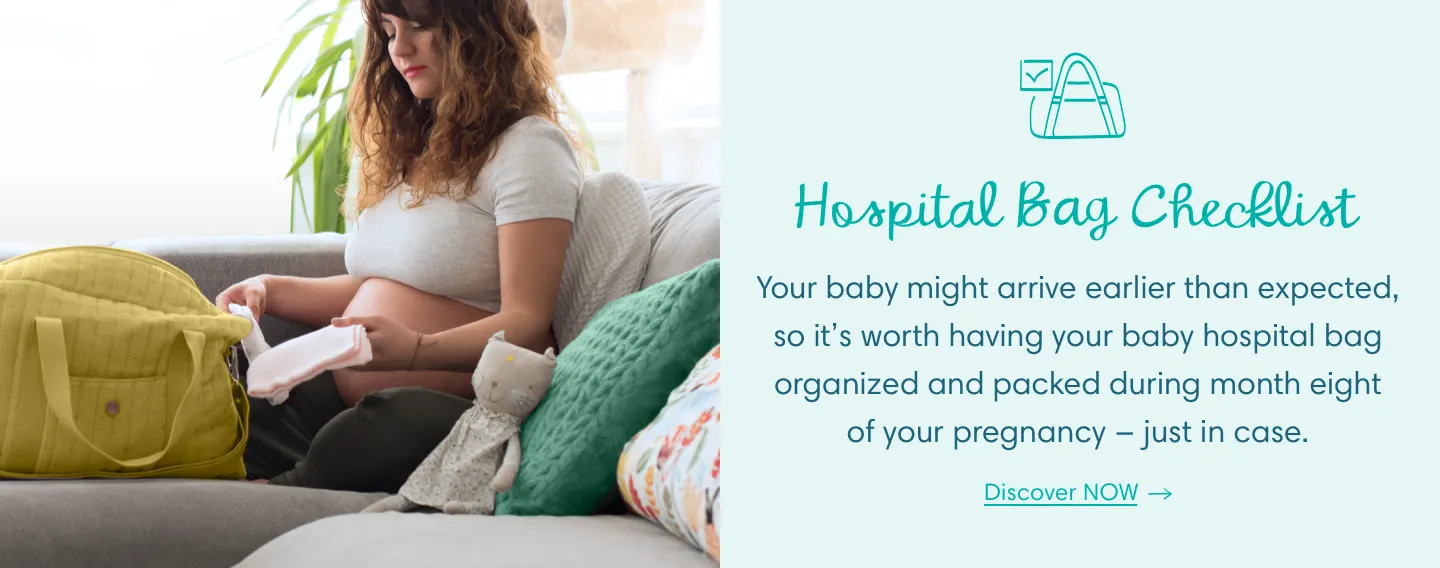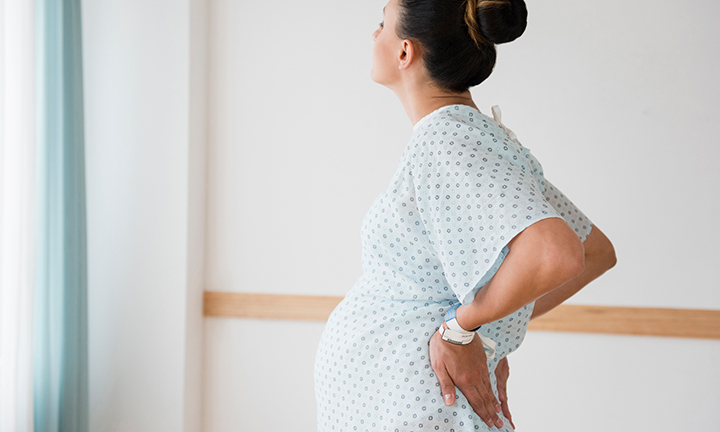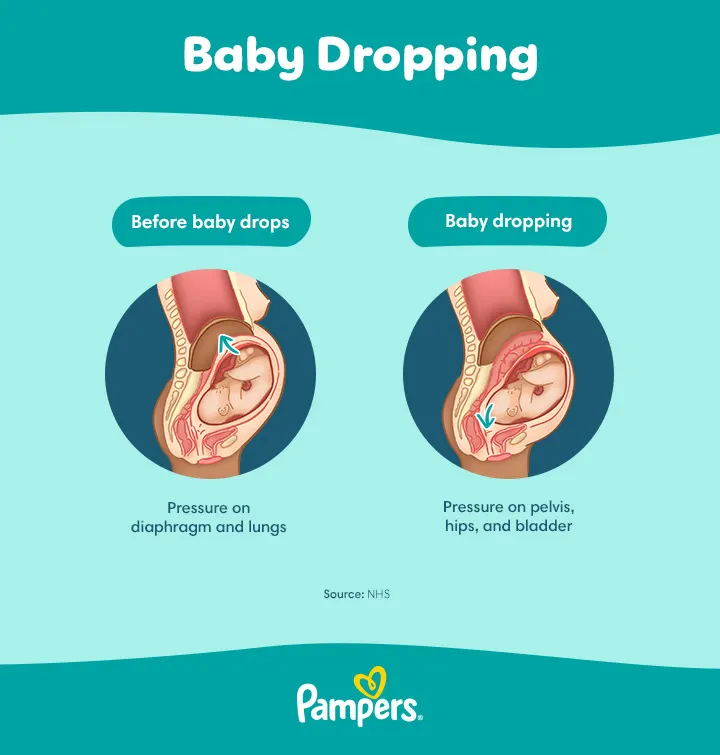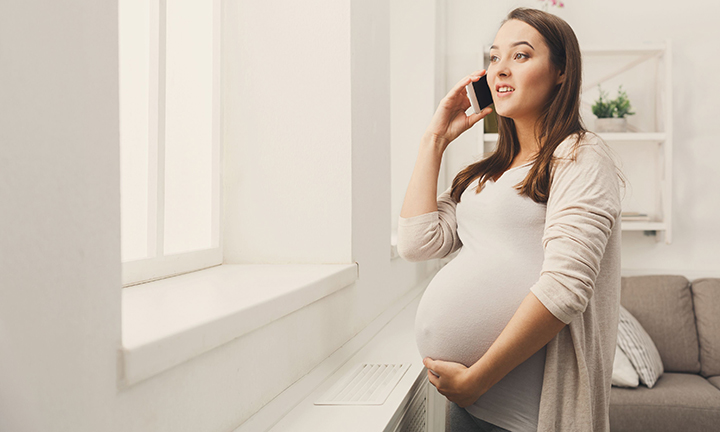
When Does Your Baby Drop?
As your due date approaches, you may notice that your baby ‘drops’ lower into your pelvis, or you may be wondering ‘When does a baby drop’? This process is sometimes called ‘lightening’ or your baby’s head ‘engaging’ in pregnancy. It’s an important milestone that signals labour is a few weeks or hours away, but not everyone will notice it. Keep reading to discover when and why your baby turns head down and drops during pregnancy and how long till labour after this happens.
What Is Lightening in Pregnancy?
When your baby turns to a head-down position and descends lower down into your pelvis, this may be referred to as their head being ‘engaged’ or as ‘lightening’ in pregnancy. This happens in preparation for birth – a sign your body and your little one is getting ready for labour.
This process is sometimes called lightening because, as your baby drops down lower into your pelvis, you may experience less pressure on your abdomen and lungs, causing a lighter feeling.
When Does a Baby Drop?
There’s no specific timeline for when a baby ‘drops’ or their head ‘engages’; however, this generally occurs toward the end of your third trimester, in the last few weeks before birth. You might look at it as a sign of prelabour; however, some babies may not drop until labour begins.
When a Baby is Head Down, How Long Till Labour?
When your baby’s head has engaged, the length of time between this happening and labour starting can vary greatly. Some babies don’t drop until labour begins, while others may drop a few weeks before labour.
How to Tell if Your Baby’s Head is Engaged
So, what are some signs to indicate that your baby has dropped? While some pregnant people experience very few or no signs that their baby has dropped, others may have clear indications. If you’re wondering what it feels like when your baby is turning head down and ‘engaging’, what a dropped belly in pregnancy looks like, or you’re asking, ‘If my baby is engaged where will I feel kicks?’ below are some possible signs and symptoms that may indicate your baby has dropped:
It’s important to remember that every pregnancy is different, and you may or may not notice any signs or symptoms of your baby dropping. Your experience may also vary depending on whether this is your first pregnancy or if you've been pregnant before, and how low your baby was carried throughout your pregnancy.
Occasionally, your baby dropping is a sign that labour is near (or at the most, a few weeks away). If you experience other signs of labour, such as contractions, you may want to time them.
What if Your Baby Doesn’t Move to a Head Down Position?
As we mentioned above, every pregnancy is unique, and your baby may drop during labour rather than before labour starts. The head-down position is the ideal position for your baby to be in for vaginal birth. However, in some cases, a baby might be in another position, such as breech (feet down, head up).
During your regular antenatal checkups, your doctor or GP will check the position and location of your baby in the uterus by feeling your abdomen.
If your baby is in a breech position when you’re around 36 or 37 weeks pregnant, your doctor may decide to try turning your baby's head down by external cephalic version (ECV).
Can You Encourage Your Baby’s Head to Engage?
Many pregnant people may wonder how to get their baby to drop. It’s important to note that your baby dropping occurs naturally as your body prepares itself for giving birth. Be patient and let this wonderful process happen on its own.
There are some ways, such as using upright and forward-leaning postures that might help to free up some space for your baby to turn and move to a head-down position in preparation for ‘engaging.’ But these methods are not proven and it’s important to talk to your doctor or midwife first before trying anything.
When to Contact Your Doctor
As we mentioned earlier, your baby dropping is a natural process that may signify labour is a matter of hours or weeks away.
If you feel your baby dropping as you near your due date, you don’t necessarily need to contact your doctor right away unless you’re experiencing signs of labour, such as contractions or your waters breaking.
FAQS AT A GLANCE
While a baby moving into a head-down position is a good sign that they are preparing for birth, it doesn’t necessarily mean that labour is near. This can happen a few weeks before labour begins.
It’s a good idea to look out for other common signs of labour during this time.
The Bottom Line
Feeling your baby drop is a sign that your body is getting ready for labour and your new arrival is on the horizon. Your baby dropping down is a natural process and means that your little one is settling deeper into your pelvis in preparation for delivery. In the weeks or hours before labour, you may feel your baby has dropped lower, which might cause a lighter feeling as any pressure on your diaphragm or lungs is released – this is where the word ‘lightening’ comes from. You may also feel more pressure in your lower body, experience frequent urination, or notice your bump looks lower.
To ensure you’re prepared for labour, make sure you know the other signs and symptoms to look out for, and get ahead by packing your hospital bag.
How We Wrote This Article The information in this article is based on the expert advice found in trusted medical and government sources, such as the National Health Service (NHS). You can find a full list of sources used for this article below. The content on this page should not replace professional medical advice. Always consult medical professionals for full diagnosis and treatment.













